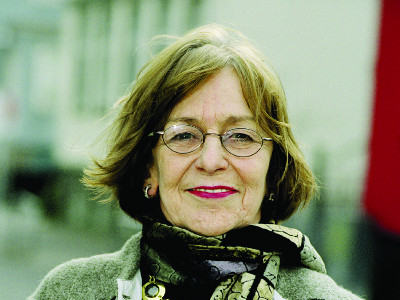Bio
Guðrún Helgadóttir was born in Hafnarfjördur in the capital area on September 7th, 1935 and grew up there as one of many siblings. She worked as a secretary at Reykjavík Higher Secondary Grammar School 1957-1970 and as department manager at the National Health and Insurance Office 1973-1980. Guðrún represented the People's Alliance on Reykjavík City Council 1978-1982 and was a member of the Icelandic legislative assembly 1979-1995. She was Speaker of the Icelandic parliament Althingi 1988-1991, the first woman to hold that position.
Guðrún's first book, the children's book Jón Oddur og Jón Bjarni (Jón Oddur and Jón Bjarni), appeared in 1974 and is the first of three about these scheming twin brothers. All have been republished numerous times and a film based on the stories was released in 1981. Guðrún Helgadóttir is one of the best known writers of children's fiction in Iceland and her books have been translated into several languages. She received the Nordic Children's Book Prize in 1992 for her book Undan Illgresinu (From Beneath the Weeds), was nominated for the H. C. Andersen Award in 1988 and has also received various awards and recognitions for her work in Iceland.
Guðrún Helgadóttir mainly writes for 7 - 13 year old readers, but has also published a few illustrated books for young children with illustrations by known artists as well as a television play and a novel for adults. Her children's play Óvitar (Infants) opened in the National Theatre of Iceland in 1979 and has also been staged in the Faeroes and in Norway.
In 2019, the City of Reykjavík established a literary prize in her name, the Guðrún Helgadóttir Children's Literature Prize, given to a script for a children's book, following an open competition. The prize is meant to encourage new and excellent writing for children.
From the Author
From Guðrún Helgadóttir
Why do I write? Couldn’t I just as well ask: who am I? It is damn complicated, I think. And yet, maybe not. Once I was a tiny little girl in a fishing town I thought was ugly. Nothing more beautiful than garden docks grew there. And the fences were almost in ruins. The houses unpainted. The oldest of ten children in way too small a house. But outside the village were the hillock and a hayfield with buttercups and bluebells. And the sky above. It was beautiful. And that’s how life should be, I felt. Some people were able to keep things pretty, some were not. I found this unjust. The grown ups said it was the rich people who grew flowers and trees and had concrete walls and iron gates surrounding their houses. I didn’t accept this as an explanation. Why didn’t the poor people do something to keep their houses pretty? They just sat and drank coffee. I couldn’t stand it and was cantankerous.
“I always knew my sister Rúna would someday write a trilogy about a broken fence,” one of my brothers once said. He was right. It was obvious from the start. I just didn’t know it then. I knew, however, that I was alone inside myself. Terribly alone. No one knew about me in the whole wide world. But people would most definitely learn about me. The loneliness was unbearable. My best friend didn’t help in these matters because you couldn’t talk about such things. And I did all sorts of things to make the world aware of this sad existence. Nobody else would do it anyway. The most obvious things to do were to do well at school; be efficient at sewing, crocheting and knitting; acting in plays. People would notice that. You could also grow flowers on the lawn. They grew rather well no matter what the grown ups said. I sometimes thought they were wrong. And then you could live in your own world, where everything was better. Much better. A world where nobody said this stupid word “cocky,” if you said anything at all to those fools. A part of this wonderful world was books. Icelandic books and foreign books. Books about everything under the sun. Books about sorrow and happiness, humiliation and dignity. Books about all the emotions no one could talk about. And meanwhile the loneliness disappeared like a cloud in the sky.
The fences in the town gradually got better and the houses were painted. Now I get the feeling that the beautiful town in which I was born almost mocks me when I visit it. But then I think confidently: “What did I tell you?” I continued to be cantankerous. For years it was my occupation to argue. Sometimes the arguing helped, sometimes it didn’t. Yet, it was necessary. You can’t just drink coffee. Someone has to take action. The other thing troubles me more – the thing about the loneliness. I am no longer afraid that no one knows of my existance! Sometimes it is good, sometimes not as good. It depends on how good a companion I am at each time, and how much I have to spare. And it is precisely then that I write. When I have a lot to spare.
Guðrún Helgadóttir, 2000.
Translated by Jóhann Thorarensen.
About the Author
Gudrún Helgadóttir – A Spokeswoman For Children
How should good children´s books be? We all have our own ideas but there are a few things that most often appear. Children´s books “should” be funny and entertaining, build up the young readers´ moral awareness and be written in good language. They “should” help young readers become valuable members of society, but above all, they “should” deal with life itself. It is not so hard to put together a funny story and even easier to preach what is right and what is wrong. Using good language is also something most people are capable of. What separates mediocre writers of children´s fiction from the best is the credibility of the story and the ability to narrate in such a way that the reader is drawn in and concerns himself with the characters´ destiny. All the greatest children´s books reveal to us the adventures of everyday life in a brand new way and make us think from the start.
Gudrún Helgadóttir was born on September 7th 1935 in Hafnarfjördur, Iceland. Besides writing she has been active in politics and was a member of Parliament from 1979 until the mid-nineties. Helgadóttir´s first novel was published 25 years ago. It was the story of the twins Jón Oddur and Jón Bjarni. They live in an apartment building with their father and mother, their younger sister Magga and Anna Jóna, who is their half-sister and suffers from a terrible disease called “ the terrible teens” which young readers understood as little of as the brothers. The domestic help, Soffía, takes care of the children during the day, while their parents are at work, and Amma rep., who is a representative for the radio and has opinions about everything, also appears in the story. Two other novels about the brothers followed and in 1981 Thráinn Bertelsson did a popular movie about Jón Oddur and Jón Bjarni and their family.
From 1974 to 1980 when the novels about the brothers appeared, there was a strong demand for political and even radical children´s books. The novels about Jón Oddur and Jón Bjarni are in many ways in line with the ideas of the time. Both parents work outside the home and are active in politics. We even get a hint at political struggles lurking in the background, understandably enough since the grown-ups are all members of different political parties and do not always agree with each other. Helgadóttir´s novels encourage the readers, children as well as grown ups, to think about the society and its rules, while the author avoids presenting her own political views.
Many children´s books that were written at the time have aged badly. They are a heavier and more serious reading than most children´s books today and are too much concerned with problems. What is so interesting about Helgadóttir´s novels is that they are, unlike most books from that time, just as entertaining today as when they first appeared. The magic lies, among other things, in the point of view.
One of Helgadóttir´s distinctive features as an author is the child´s point of view. She has the ability to be able to place herself in the shoes of a child and show the world as it sees it. The child´s vision is always fresh and thus her work ages so well. There is often a delightful discrepancy between what the children in the stories feel and reality. For example, Simbi, Anna Jóna´s (the brothers´ half-sister) boyfriend, always has one pimple in his face. The brothers think this is always the same pimple and watch closely as it travels around Simbi´s face while those who are older understand the true nature of the matter. Whether the reader understands or not, Simbi´s pimple is interesting and humorous and it is one of the innumerable things in Helgadóttir´s novels which is amusing to both children and adults, though in different ways. The child´s eye can approach its subject in a different way than that of adults´ and thus Helgadóttir´s characters often point out various evils of society, which the grown ups take for granted.
Many adult lovers of children´s literature demand that books for children carry with them a sound moral message. This Helgadóttir´s novels most certainly do. The rights and position of those who are worse off are always close to her heart. On the Icelandic Althing Gudrún Helgadóttir, the MP, has fought for the improvement of people´s conditions. In her novels the battle is rarely about money or fish, but about children´s rights and the rights of those who are worse off and without a voice in society. In her works she points out the lack of children´s rights and how dependant they are on the will and opinions of adults. Jón Oddur and Jón Bjarni are fortunate to have good parents but it is obvious that everyone is not as lucky. Jói, who lives in the apartment below, is a terrible bully but even the youngest readers of the trilogy sympathise with him when his mother scolds him and argues. The twins´ friend is Lárus. The picture that is drawn of his home and family is very different from the brothers´ family. His father is a sailor and thus his mother is often left alone with him and his sister Selma. Selma is one of Helgadóttir´s less fortunate characters. She has Down´s syndrome but the boys take her into their care and look after her quite a lot. They are sneered at by other kids who do not understand the nature of the matter. Here Helgadóttir achieves two things at the same time. She gets it across to children that you simply do not do this sort of thing and she sends the adults a message; it is theirs to raise the children so that they become open-minded and tolerant human beings.
Sometimes it is as if the message in Helgadóttir´s novels is more intended for adults. The puppet Páll Vilhjálmsson appeared in a children´s program in the Icelandic State television for two winters and Gudrún Helgadóttir wrote his lines. Later she published a novel in which Páll, or Palli as the whole nation called him, starred as the central character . Since Palli was a puppet and not a real boy Helgadóttir could have him do and say things she would never have got away with had it been a real child. Páll Vilhjálmsson is without doubt the spokesman for all children in Iceland. He is critical of the grown ups´ world and habits and speaks his mind unhesitatingly. He even starts a children´s association fighting for children´s rights which are in his opinion trampled upon by adults. But Palli is also amusing and funny. Like Helgadóttir´s other novels the book about Palli can be read by children and grown-ups alike and thus it is a popular recital. This way the message reaches the grown ups as well who just might become a little more courteous to children.
A year before Páll Vilhjálmsson appeared Helgadóttir published the novel Í Afahúsi (In Grandpa´s House). Here we get the story of Tóta who is eight years old and an unusually mature and clear-headed girl, which she needs to be since life is not always all roses. Tóta lives with her parents and siblings in her grandparents´ house after her parents shift out from the material race and sell a house they were building. Her father stops working at sea and becomes a poet and the family moves into grandpa and grandma´s cellar. You need to have strong bones to go against the mainstream and this Tóta has indeed. And once more Helgadóttir draws her readers´ attention to the unusual and the special. Tóta makes a new friend called Ásdís who is a an adopted child from Korea. She is picked upon at school because she looks different , but the girls stand back to back and gain victory over the bullies.
Most striking, however, is the child´s criticism of the grown ups´ world in the play Óvitar (Infants) which Helgadóttir wrote for The National Theatre of Iceland in the UN´s children´s year in 1979. There she alienates the world of play by turning the roles upside down. The children in the play are played by adults and adults by children. In this unusual world children are born big and get smaller as time goes by. The old people are of course smallest. In Óvitar we meet two big but young boys called Gudmundur and Finnur. Finnur´s family life is not a very good one and he decides to run away and hides at Gudmundur´s place. Gudmundur´s parents work so much that they do not notice the secret passenger. The play is very amusing and witty and by reversing the roles the author gets us to think about things that are not to be taken for granted. The setting in National Theatre´s production was for instance all done in children´s sizes and thus designed for the grown-ups in the play.
Helgadóttir´s next novels are a trilogy composed of Sitji guðs englar (Heaven´s Host), Saman í hring (Round and Round), and Sænginni yfir minni (Around My Bed). Here Helgadóttir strikes a new chord. The novels tell the story of a family with many children living in Hafnarfjördur at the end of the Second World War and the following years. The extended family lives together in a dilapidated house and their standard of living is determined by how the fishing goes. The father is a sailor who drinks too much, the mother gutless, the grandmother god fearing, and the grandfather old, blind, and bitter. In the first novel the author stands close to the oldest sister, Heida. She is serious and ambitious and in many ways carries the responsibility the grown ups should. She dreams of being like others and does everything in her power to reverse the family´s misfortune. In the second novel we see the world through the eyes of Lóa Lóa, her sister. She thinks a lot, by her own account, but doesn´t look at life as seriously as Heida. The third novel is told from the point of view of the youngest sister, Abba “the other”. She is the lively one of the lot and the atmosphere is thus lighter in the last part of the trilogy. Not showing any less regard for Gudrún Helgadóttir´s other books , these are the peak of her career. They possess everything that can make a book become a classic . The story of the fate of this family and other members of the community concerns all readers, children as well as grown-ups. They also shed a light on a purely Icelandic world in a time of great change in Icelandic society and direct people´s attention to the many fishing families of this country, of which very little has been written in children´s literature. Illugi Jökulsson has adapted the stories for radio and the play was performed in the Icelandic State radio in the summer of 1999.
Undan illgresinu (From Beneath the Weeds) appeared in 1990. There we meet Marta María who is moving with her mother and two brothers from a brand new house into a flat in an old and mysterious one. Her father committed suicide two years back and since then life has been difficult. Many interesting characters live in the old house but a shadow hangs over them. Marta María starts clearing away the weeds in the garden surrounding the house and little by little the inhabitants start cleaning up their lives as well. Once the truth has been told things start to lighten up. The novel received the Nordic Children´s Book Prize in 1992.
Helgadóttir´s next novel was Litlu greyin (Poor Little Things). Here we learn about the boy Trausti and his sisters, Tobba and Tinna. With their mother they go to a summerhouse in the country. The small family is very sad since daddy is moving out. The children´s grandmother visits them in order to cheer them up but instead she gets lost. These unexpected difficulties draw the family back together and the father decides not to move out after all. A young escaped convict also makes his appearance and is in fact the one who finds the grandmother. One of Helgadóttir´s distinctive features as an author is exactly that nothing is as simple as it seems at first sight and the unfortunate convict turns out to be good-natured after all.
In her next three novels Helgadóttir is still dealing with criminals. The novels Ekkert að þakka! (Don´t Mention It!), Ekkert að marka! (Don´t You Believe It!) and Aldrei að vita! (You Never Know) form a trilogy about three kids who get into unexpected adventures and solve criminal cases. In the first novel Ekkert að þakka!, published in 1995, the girl Eva tells how she and her friend Ari Sveinn found a bag full of money that criminals tried to get away. They use the money to make the poor and the down and out happy. The kids´ clients are a diverse group and here the opportunity arises to get a glimpse into the lives of different individuals. In the novel homosexuality is also discussed in an objective and a very natural manner. The second novel Ekkert að marka! is narrated from Ari Sveinn´s point of view and in it he and Áki solve a mysterious case of illegal home brewing. In the third novel, Aldrei að vita!, we get to know Áki´s world. The boys join Ari Sveinn´s family in a trip to the country. There the boys are tested when they witness a theft of eiderdown. In the last two books Helgadóttir puts more emphasis on excitement which makes them more thrilling than her previous works. In an interview she has said that she does it because of the increased supply of various exciting diversions for children. She wants to write books that can compete with everything that is offered. These books, however, are to complex to be classified with traditional popular literature. We get to see many sides of the matter, more than is usual in such books. As an example the criminal in Ekkert að marka!, an old lady who ekes out her wages by brewing, does not receive the traditional punishment.
Helgadóttir has also written a few illustrated books. The first was Ástarsaga úr fjöllunum (A Giant Love Story) first published in 1981 and co-authored by the illustrator Brian Pilkington. This story has been a classic in Iceland for a long time, understandably since it merges a great story and amusing pictures. The story is based on Icelandic folklore and tells of the troll woman Flumbra who goes out to meet her lover but turns into stone when the first rays of sunlight reach her. In the story various natural phenomena, such as earthquakes and volcanic eruptions, are explained by the trolls´ behaviour. Ástarsaga úr fjöllunum has been translated into many languages.
In 1985 Gunnhildur og Glói (Gunnhildur and Glói) appeared with illustrations by Terry Burton and Úlfar Örn Valdimarsson. This is the story of Gunnhildur who has a rough time in kindergarten but when the world is at its bleakest she meets the fairy Glói who gives her a new and brighter vision of life. Then it is Núna heitir hann bara Pétur (Now He´s Just Plain Peter ) which appeared in 1990, a simple story illustrated by Hördur Hauksson. There we learn about Pétur, a four-year-old boy, who still wets his pants but stops dead when the ducks refuse breadcrumbs wet in urine. Velkominn Heim Hannibal Hansson (Welcome Home Hannibal Hansson) appeared two years later. It is a beautiful story about a young boy who is moving home to Iceland. He does not want to move at all but on the way in the airplane he gets to know sky children and thinks differently after that. Helgadóttir´s next illustrated book is called Englajól (The Angels´ Christmas). Former president of Iceland, Vigdís Finnbogadóttir, read the story on Christmas day in the state television in 1995 but the book was not published until 1997 with exceptional illustrations by Brian Pilkington.
Children are individuals in the making and it is vital for society that children´s books are written with love and respect for children as guideposts. Gudrún Helgadóttir has always done this and done it better than most others. I myself and many others of my generation are grateful for having grown up with her work. Fortunately Helgadóttir is still writing for children of all ages and thus our treasure grows ever larger. This we should be grateful for.
Margrét Tryggvadóttir, 2000.
Translated by Jóhann Thorarensen.
Awards
2014 - The DV Cultural Prize, Honorary Award
2007 - The Guðrún Helgadóttir Children´s Literature Award
2006 - The Bookseller´s Literature Prize: Öðruvísi saga (A Different Story), as the best children´s book.
2005 - The Jónas Hallgímsson Award (an award given by the Ministry of Culture and Education on the Day of the Icelandic Language, November 16).
2004 - The Children´s Choice Book Prize: Öðruvísi fjölskylda (A Different Family)
1999 - IBBY Iceland Award
1996 - VISA Cultural Prize
1994 - Reykjavík Scholastic Prize: Litlu greyin (Poor Little Things)
1993 - The Icelandic National Broadcasting Service Writer´s Prize
1992 - The Nordic Children´s Book Prize: Undan illgresinu (From Beneath the Weeds)
1988 - IBBY Iceland Award: Sænginni yfir minni (Around My Bed)
1980 - Thorbjörn Egner Fund Prize: Óvitar (Infants)
1975 - Reykjavík Scholastic Prize: Jón Oddur og Jón Bjarni (Jón Oddur and Jón Bjarni)
Nominations
2005 - The Astrid Lindgren Award.
2004 - The Icelandic Literature Prize: Öðruvísi fjölskylda (A Different Family)
2001 - H.C. Andersen Prize
1988 and 1991- The Nordic Children´s Book Prize: Sitji guðs englar; Saman í hring and Sænginni yfir minni (Heaven´s Host; Round and Round and Around My Bed)
1988 - H.C. Andersen Prize
1987 - The Nordic Children´s Book Prize: Sitji guðs englar and Saman í hring (Heaven´s Host and Round and Round)
1985 - The Nordic Children´s Book Prize: Sitji guðs englar (Heaven´s Host)

Blaubeeren und Vanilleeis
Read more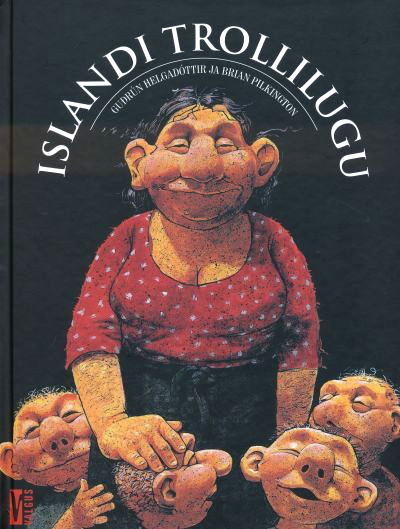
Islandi trollilugu
Read more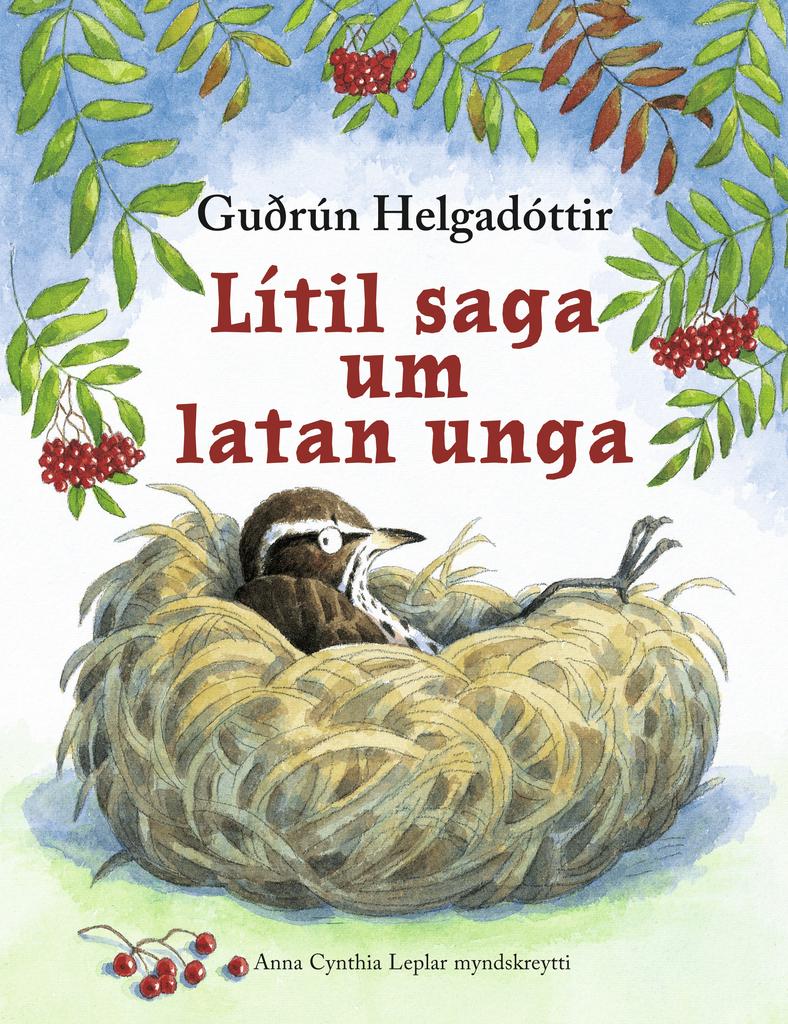
A Little Story about a Lazy Chick
Read more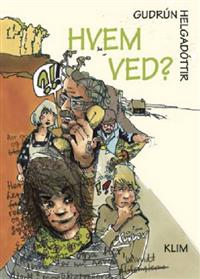
Hvem ved
Read more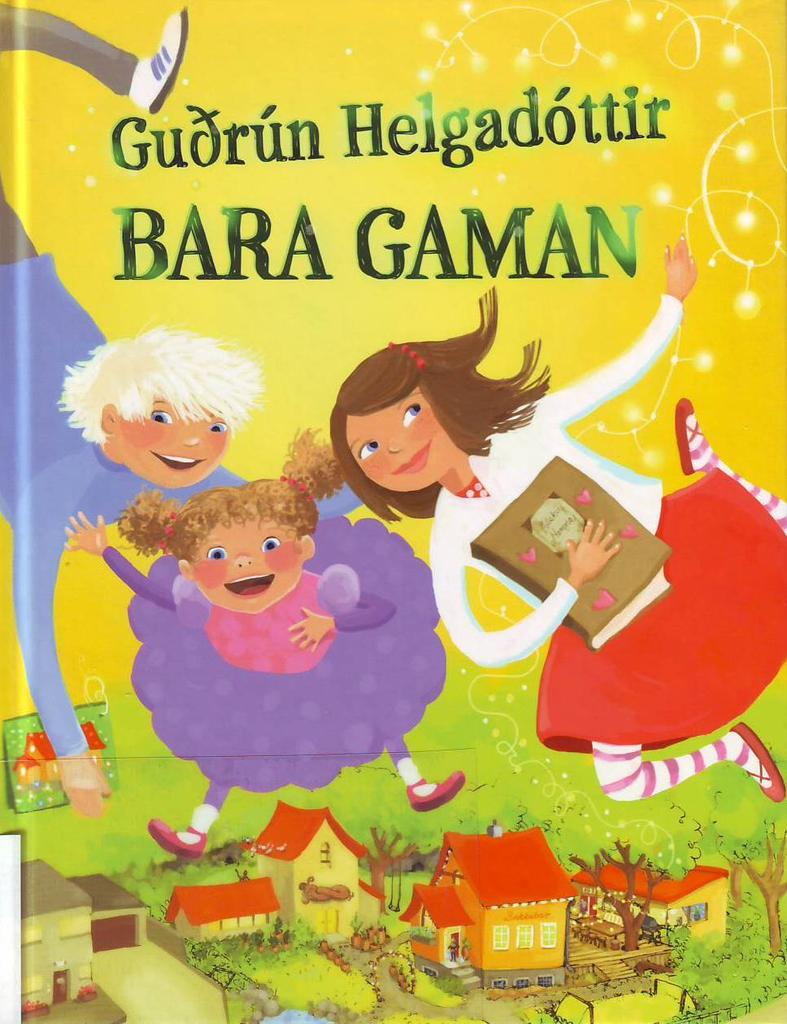
Bara gaman (Just Fun)
Read moreUngene lekte i utmarken helt til Páll skjöt på soldatene
Read more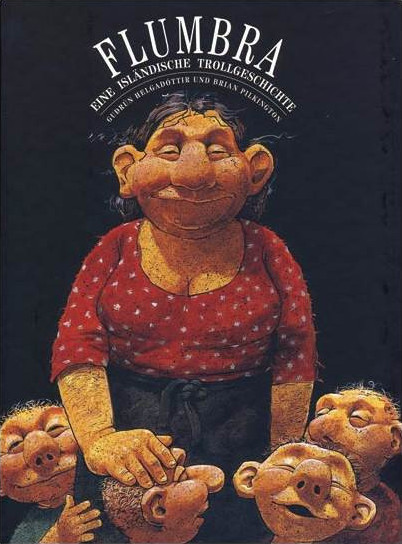
Flumbra : eine isländische Trollgeschichte
Read more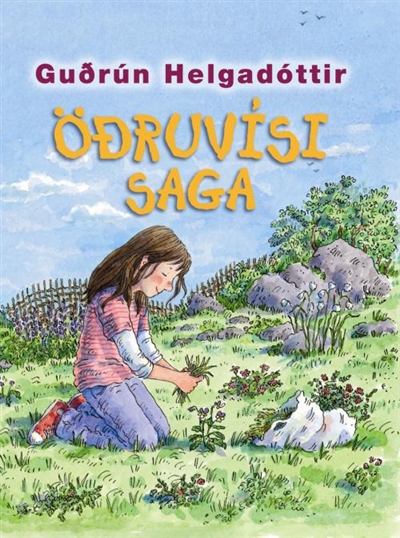
Öðruvísi saga (A Different Kind of Story)
Read moreA Giant Love Story in Korean
Read more
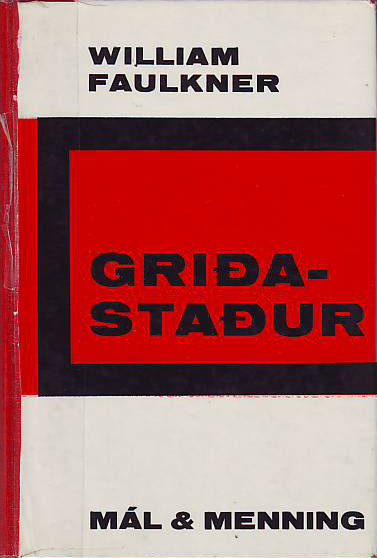
Griðarstaður (Sanctuary)
Read more
